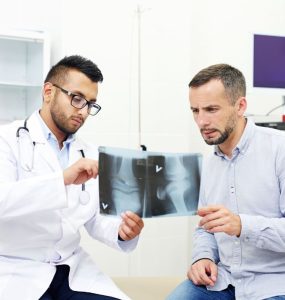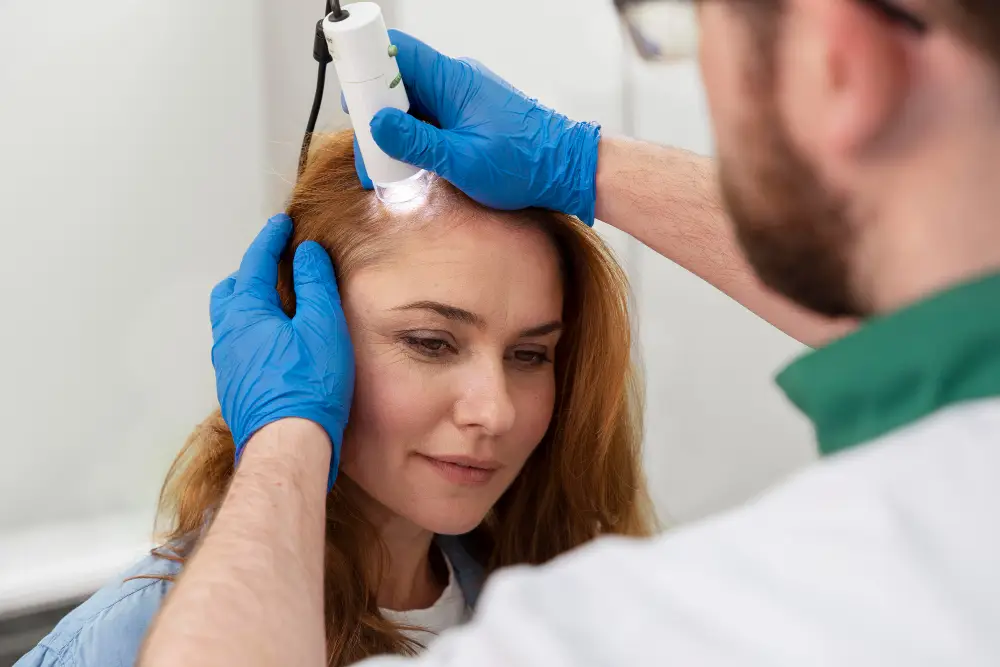
Key Takeaways from This Guide
- **Understanding Osteoarthritis:** It’s a progressive degenerative joint disease affecting millions, characterized by cartilage breakdown and pain, significantly impacting quality of life.
- **Evolving Treatment Landscape:** While conventional treatments manage symptoms, regenerative medicine, including stem cell therapy, is an area of growing interest for its potential role in cartilage repair and joint preservation.
- **The Colombia Advantage:** Pereira offers a compelling combination of advanced medical infrastructure, highly trained professionals, and a patient-centric approach within a well-regulated framework (governed by the Colombian Ministry of Health and INVIMA), often providing a more direct and personalized care experience than many Western systems.
- **Ethical Guidance:** This guide emphasizes informed decision-making, providing verified information and transparently addressing common patient concerns about safety, efficacy, and logistics of international medical care.
- **Your Next Step:** Understanding your options begins with a confidential review to assess if regenerative pathways align with your specific condition and goals.
Stem Cell Treatment for Osteoarthritis: A Comprehensive Guide to Cartilage Repair, Joint Preservation, and Your Options in Pereira, Colombia
If you or a loved one are navigating the challenges of osteoarthritis, particularly degenerative joint disease, you understand the profound impact it can have on daily life. The search for effective solutions often leads down many paths, from conventional management to the cutting-edge possibilities of regenerative medicine. At Regencord, located in the vibrant city of Pereira, Colombia, our team believes in empowering patients with clear, comprehensive information. This guide is designed to shed light on stem cell treatment for osteoarthritis, exploring its potential for cartilage repair and joint preservation, while addressing the critical questions and concerns that arise on this patient journey.
Our commitment is to transparency, education, and providing a patient-centric perspective. We understand the anxieties that accompany chronic conditions and the complex decisions involved in seeking care, especially internationally. This resource is crafted to be your definitive guide, grounded in verifiable information and a deep understanding of what you’re experiencing.
Introduction: Understanding Your Journey
Living with osteoarthritis can feel like a constant battle against pain, stiffness, and diminishing mobility. The frustration of limited options and the desire for a better quality of life often drive individuals to explore every possible avenue, including innovative regenerative therapies. The concept of stem cell treatment for osteoarthritis has garnered significant attention, promising possibilities for cartilage repair and joint preservation that go beyond symptom management.
However, the landscape of regenerative medicine can be complex and confusing. Questions about safety, effectiveness, regulation, and the logistics of pursuing such treatments often emerge. This guide aims to demystify these considerations, providing a clear, evidence-based narrative designed by the Regencord team to help you make truly informed decisions.
The Stakes: Critical Implications of Osteoarthritis and Degenerative Joint Disease

Osteoarthritis (OA) is the most common form of arthritis, affecting millions worldwide. It is a progressive degenerative joint disease where the protective cartilage that cushions the ends of your bones wears down over time. This leads to pain, swelling, stiffness, and reduced range of motion, severely impacting daily activities and overall quality of life. The World Health Organization (WHO) highlights musculoskeletal conditions, including OA, as leading causes of disability globally, with a significant increase in prevalence as populations age.
The progression of OA is often slow but relentless. Initially, symptoms might be mild, but as cartilage continues to degrade, bone-on-bone friction can occur, leading to chronic pain and structural damage. According to the U.S. National Institutes of Health (NIH), specifically the National Institute of Arthritis and Musculoskeletal and Skin Diseases (NIAMS), OA affects a significant portion of the adult population, and its prevalence is expected to rise as life expectancy increases. The emotional toll of chronic pain, loss of independence, and the inability to engage in previously enjoyed activities can be as significant as the physical discomfort.
The implications of unmanaged or poorly managed osteoarthritis extend beyond the individual. It places a considerable burden on healthcare systems globally. The search for therapies that offer more than symptomatic relief – therapies that might contribute to cartilage repair or joint preservation – represents a significant area of hope and scientific inquiry for those living with this condition.
For many, the standard treatment pathways eventually lead to contemplating invasive surgeries, such as joint replacement. This creates a critical window where patients are actively seeking alternatives, driven by a desire to avoid surgery, reduce pain, and restore function in a less invasive manner. Understanding these stakes is crucial for comprehending why a comprehensive, educational approach to stem cell treatment for osteoarthritis is so vital.
The Conventional Approach to Osteoarthritis in the USA, Canada, and the UK

In many Western healthcare systems, including those in the USA, Canada, and the UK, the conventional management of osteoarthritis typically follows a stepped approach, moving from conservative measures to more invasive interventions as the disease progresses.
Early-Stage Management: Symptom Relief and Lifestyle Adjustments
Initially, treatment focuses on managing pain and improving function through non-pharmacological methods. These often include:
- **Physical Therapy and Exercise:** Strengthening muscles around the joint, improving flexibility, and maintaining an active lifestyle are crucial. Guidelines from organizations like the National Institute for Health and Care Excellence (NICE) in the UK emphasize the importance of exercise.
- **Weight Management:** Reducing stress on weight-bearing joints through weight loss can significantly alleviate symptoms and slow disease progression.
- **Over-the-Counter Medications:** Pain relievers like acetaminophen (paracetamol in the UK) and non-steroidal anti-inflammatory drugs (NSAIDs) are often the first line of pharmacological treatment.
- **Assistive Devices:** Canes, walkers, and braces may be recommended to support affected joints and improve mobility.
Mid-Stage Interventions: Escalating Pharmaceutical and Injection Therapies
As symptoms worsen, healthcare providers may introduce stronger medications or injections:
- **Prescription NSAIDs:** More potent anti-inflammatory drugs.
- **Corticosteroid Injections:** These can provide temporary pain relief and reduce inflammation directly in the joint, though repeated injections are often limited due to potential side effects.
- **Hyaluronic Acid Injections:** Sometimes referred to as “viscosupplementation,” these injections aim to supplement the natural lubricants in the joint, potentially improving mobility and reducing pain for some patients.
- **Opioids:** In severe cases, and typically for short durations, opioid pain relievers may be prescribed, but their long-term use is carefully managed due to risks of dependence and side effects.
In the USA, the Food and Drug Administration (FDA) regulates many of these pharmaceutical and injection therapies, ensuring they meet safety and efficacy standards. Similarly, Health Canada and the UK’s Medicines and Healthcare products Regulatory Agency (MHRA) oversee the approval and use of treatments in their respective countries.
Late-Stage Options: Surgical Interventions
When conservative and non-surgical treatments no longer provide adequate relief, surgical options become a consideration. These include:
- **Arthroscopy:** A minimally invasive procedure to clean out loose cartilage or bone fragments.
- **Osteotomy:** Reshaping bones to shift weight away from damaged cartilage.
- **Arthroplasty (Joint Replacement):** For severely damaged joints, particularly hips and knees, total joint replacement is a common and often highly effective solution, although it is a major surgery with significant recovery time and potential risks.
While these conventional pathways are well-established and often effective, many patients reach a point where they are either not candidates for surgery, wish to avoid it, or find that earlier interventions no longer provide sufficient relief. This is where the exploration of alternative or complementary strategies, such as mesenchymal stem cell therapy for joint preservation, often begins, leading many to investigate options in jurisdictions with robust, yet accessible, regenerative medicine offerings.
The Pereira, Colombia Advantage: A New Perspective on Care

For patients considering stem cell treatment for osteoarthritis, the decision to seek care internationally often comes after a lengthy and sometimes frustrating journey within their home healthcare system. It’s a journey driven by a desire for comprehensive, patient-centric solutions that address not just symptoms, but the broader impact of degenerative joint disease on their lives. Pereira, Colombia, emerges as a compelling destination, offering distinct advantages that extend beyond perceived cost efficiencies.
Our experience at Regencord has shown us that patients are often deeply fatigued by a fragmented healthcare journey. They are not just seeking a treatment; they are seeking a coherent, compassionate pathway that acknowledges their unique physical and emotional burden, offering guidance from the very first inquiry through recovery. This is precisely where Pereira’s approach to international medical care excels.
A Robust Healthcare Infrastructure and Skilled Professionals
Colombia has invested significantly in its healthcare system, particularly in the private sector. Cities like Pereira boast modern medical facilities equipped with advanced technology, comparable to many Western nations. The medical professionals here, including those specializing in regenerative medicine and orthopedic care, are highly trained, often educated in rigorous local universities with international affiliations, or having completed further training abroad. The Colombian Ministry of Health and Social Protection, along with INVIMA (the National Food and Drug Surveillance Institute), provides a regulatory framework that ensures standards of practice and the responsible application of medical treatments.
This means that concerns about the quality of medical care in Colombia, particularly in established private clinics in cities like Pereira, can be reframed. It’s not a question of compromising on standards, but rather discovering a system that often combines world-class clinical capabilities with a more accessible and direct patient engagement model.
The Patient Journey: Supported, Not Overwhelmed
One of the primary fears patients express when considering international care is the sheer logistical complexity and the feeling of being overwhelmed. The Regencord team addresses this directly. Our approach transforms what could be an intimidating process into a streamlined, supported journey. From your initial confidential case review, we assist with every step: understanding treatment pathways, coordinating travel logistics, arranging comfortable accommodation, managing clinical appointments, and providing ongoing support during your stay and post-treatment.
This comprehensive support system means you are not left to navigate a new country or medical system alone. We bridge potential cultural or language gaps, allowing you to focus on your health and recovery, rather than administrative burdens. This empathetic approach is a cornerstone of the patient experience in Pereira.
Holistic Environment for Recovery
Beyond the clinical advantages, Pereira itself contributes significantly to the healing process. Nestled in the heart of Colombia’s Coffee Region, the city offers a tranquil, recovery-conducive environment. Its mild climate, natural beauty, and slower pace of life provide a stark contrast to the often-stressful environments patients may be accustomed to. This holistic context—where high-quality medical care meets a supportive, peaceful setting—is an often-overlooked yet critical element in patient recovery. It fosters a sense of calm and focused care that is distinct from the hurried, volume-driven models prevalent elsewhere.
The true advantage of Pereira for medical care lies in this unique confluence of factors: a robust, yet accessible, private medical infrastructure that often prioritizes direct patient engagement, highly trained medical professionals educated in a system known for clinical excellence, and a tranquil, recovery-conducive environment. This combination offers a deeply personal and effective pathway for those exploring stem cell treatment for osteoarthritis, mesenchymal stem cell therapy, cartilage repair, and joint preservation.
The Regencord Pathway Compass: Your Guide to Osteoarthritis Care

Navigating the complexities of osteoarthritis and exploring regenerative medicine options requires a clear roadmap. To assist you in this crucial journey, the Regencord team has developed “The Regencord Pathway Compass: Your Guide to Osteoarthritis Care.” This branded resource tool is designed to empower you with structured information and key considerations, ensuring you’re well-prepared for every step of the process.
This compass serves as a practical checklist and informational hub, helping you organize your thoughts, questions, and expectations before, during, and after considering pathways for cartilage repair and joint preservation. It aims to demystify the process and provide actionable steps.
What the Regencord Pathway Compass Helps You With:
- Self-Assessment Checklist: Understand your current condition, pain levels, and mobility limitations to articulate your needs effectively during your confidential case review.
- Key Questions for Your Medical Review: A curated list of essential questions about stem cell treatment for osteoarthritis, its potential for cartilage repair, joint preservation, and mesenchymal stem cell therapy, ensuring you cover all critical areas.
- Understanding Colombian Regulatory Standards: Clear information on how INVIMA and the Colombian Ministry of Health oversee medical treatments, providing peace of mind regarding the legitimate application of therapies.
- Logistical Preparation Guide: Step-by-step advice on travel considerations, accommodation options in Pereira, and what to expect during your stay.
- Post-Review Reflection Points: Tools to help you process information, weigh your options, and discuss them with your support network after your initial assessment.
- Setting Realistic Expectations: Guidance on understanding the potential benefits and limitations of regenerative pathways, focusing on long-term joint health and quality of life improvements.
The Regencord Pathway Compass is more than just a document; it’s a testament to our commitment to transparent education and patient empowerment. It transforms the perception of a complex process into a manageable, supported pathway, reinforcing our role as your dedicated patient advocate.
Our Regenerative Philosophy and Patient-Centric Approach

At Regencord in Pereira, Colombia, our philosophy is deeply rooted in ethical patient empowerment and a commitment to evidence-informed care. We recognize that individuals exploring stem cell treatment for osteoarthritis are seeking not just a procedure, but a partnership in their health journey. Our approach is holistic, transparent, and focused on providing clarity amidst the often-confusing landscape of regenerative medicine.
Education as the Foundation of Empowerment
We believe that an informed patient is an empowered patient. Our team prioritizes comprehensive education, ensuring that you understand the current scientific understanding of mesenchymal stem cell therapy, the potential for cartilage repair and joint preservation, and the specific pathways available through the team at Regencord. We discuss both the promising research (as highlighted by institutions like the NIH and numerous PubMed-indexed journals) and the evolving nature of this field, setting realistic expectations from the outset. We avoid medical jargon, translating complex scientific concepts into accessible language.
Ethical Practice Within a Regulated Framework
The field of regenerative medicine requires a responsible and ethical approach. We operate strictly within the guidelines established by the Colombian Ministry of Health and INVIMA, ensuring that all aspects of care adhere to national standards. This commitment to regulatory compliance provides a crucial layer of safety and legitimacy for our patients, distinguishing legitimate, medically supervised pathways from unverified or unregulated claims.
Personalized Pathways, Not Generic Solutions
There is no one-size-fits-all solution for osteoarthritis. Our patient-centric approach begins with a thorough, confidential case review. This in-depth assessment allows our team to understand your unique medical history, the specific characteristics of your degenerative joint disease, and your personal health goals. Based on this, we discuss whether regenerative pathways are suitable for your condition and outline a tailored approach designed to support your joint health and overall well-being.
A Continuum of Care and Support
Our commitment extends beyond your time in Pereira. We aim to provide a continuum of care, offering guidance for post-treatment considerations and maintaining open lines of communication. We understand that effective care involves not just the immediate treatment, but also support for recovery and long-term well-being. This empathetic, continuous support is a hallmark of our patient advocacy.
In essence, our philosophy is to be your trusted advocate and guide. We aim to transform uncertainty into clarity, providing you with the knowledge, support, and ethical pathways needed to make confident decisions about stem cell treatment for osteoarthritis, fostering hope and proactive engagement in your health journey.
Overcoming Common Hesitations: Why Seeking Clarity is a Strategic Advantage
It’s natural to have questions and hesitations when considering innovative treatments like stem cell therapy, especially when looking at options internationally. Many patients arrive with a mix of hope and apprehension. Our team at Regencord understands these concerns deeply, which is why we’ve built our approach around addressing them head-on, transforming potential barriers into pathways for clarity and confidence.
Hesitation 1: “Is stem cell treatment for osteoarthritis legitimate, safe, and regulated, or is it unproven and risky, especially when offered internationally?”
This is a profoundly valid concern, given the varying claims in the regenerative medicine field. Our counter-argument focuses on distinguishing responsible, evidence-informed application from unsubstantiated claims. While research into stem cell treatment for osteoarthritis, including mesenchymal stem cell therapy for cartilage repair and joint preservation, is continuously evolving (as documented by the NIH and numerous PubMed-indexed journals, and tracked on ClinicalTrials.gov), its responsible application within regulated environments is key.
In Colombia, medical practices, including regenerative medicine, operate under the oversight of the Colombian Ministry of Health and INVIMA. These bodies establish and enforce national standards, ensuring that treatments adhere to established protocols and ethical guidelines. We transparently discuss the current state of scientific understanding, the regulatory framework governing our pathways, and the specific characteristics of treatments available through the team at Regencord. Our commitment is to patient safety and evidence-informed discussions, clarifying the difference between experimental treatments and those offered within an accredited, nationally regulated medical framework. This approach empowers you with accurate information to assess legitimacy and safety.
Hesitation 2: “International medical travel for a complex condition like osteoarthritis feels overwhelming and confusing. How can I trust a foreign medical system?”
The thought of navigating a new country and a different medical system for a significant health issue can indeed be daunting. Our comprehensive patient advocacy directly addresses this logistical and trust anxiety. We outline a clear, step-by-step patient journey, starting from your initial confidential case review. Our dedicated team assists with every logistical detail: coordinating your travel arrangements, securing comfortable accommodation in Pereira, scheduling all your clinical appointments, and providing robust support during your stay, including translation services and local guidance.
Furthermore, trusting a “foreign” medical system is about understanding its verifiable accreditations and standards. Pereira boasts modern medical infrastructure and highly trained professionals operating under national Colombian health regulations. We emphasize that our patient advocacy team acts as your bridge, ensuring seamless communication and coordination, transforming an intimidating process into a streamlined, supported pathway. You are not alone; you have a dedicated team facilitating your entire journey, fostering a sense of security and confidence.
Hesitation 3: “What if the treatment doesn’t work? Is it just a temporary fix, and will I be left with financial strain and no improvement?”
It’s essential to acknowledge the inherent uncertainty of any medical treatment; there are no guarantees of outcomes, and we are committed to transparently communicating this. Our approach shifts the focus from a promise of specific results to fostering “informed decision-making” and “realistic expectations.” We begin with a thorough, confidential case review to determine your *candidacy* for regenerative pathways for osteoarthritis.
This detailed assessment ensures that the proposed options align with your specific condition, the extent of your degenerative joint disease, and your personal health goals. We explain the potential benefits and realistic limitations of stem cell treatment for osteoarthritis, focusing on its aim to support joint health, potentially improve quality of life, and contribute to cartilage repair and joint preservation, rather than offering a “cure.” We provide clear, transparent information regarding all associated costs and the expected duration of treatment and recovery. This clarity helps manage financial concerns and ensures that your decision is grounded in a complete understanding of what to expect, allowing you to weigh the investment against potential benefits thoughtfully.
Hesitation 4: “I’m concerned about the quality of medical care and facilities in a country like Colombia compared to my home country (e.g., USA, Canada, UK).”
This concern often stems from preconceptions rather than current realities. We reframe this perception by highlighting Colombia’s significant advancements in medical education and private healthcare infrastructure. Medical professionals in Colombia, including those on the Regencord team, frequently receive world-class training at highly regarded institutions, both domestically and internationally. Facilities in cities like Pereira are modern, well-equipped, and adhere to international standards for patient care and safety.
Unlike some high-volume systems, private medical centers in Colombia, particularly in cities focused on medical tourism, often provide a highly personalized and direct patient engagement model. This means more direct access to your care team and often shorter wait times, enhancing the overall patient experience. By focusing on verifiable facts about Colombia’s robust medical education, advanced infrastructure, and regulatory oversight (from entities like the Colombian Ministry of Health and INVIMA), we position Pereira not as a lesser alternative, but as a reputable, high-quality option offering distinct advantages in terms of accessibility, personalized care, and a supportive recovery environment, without the prohibitive costs often found in the USA, Canada, or the UK.
Glossary of Key Terms
- Osteoarthritis (OA)
- The most common form of arthritis, a degenerative joint disease where the cartilage that cushions the ends of bones wears down over time, leading to pain, stiffness, and loss of function.
- Degenerative Joint Disease
- A broad term that encompasses conditions like osteoarthritis, characterized by the progressive breakdown and eventual loss of cartilage in the joints.
- Cartilage Repair
- Medical strategies aimed at restoring or regenerating damaged articular cartilage within a joint, often a goal of regenerative therapies for osteoarthritis.
- Joint Preservation
- Approaches and treatments designed to maintain the integrity and function of a natural joint, delaying or avoiding the need for joint replacement surgery.
- Mesenchymal Stem Cell (MSC) Therapy
- A type of regenerative medicine that utilizes mesenchymal stem cells, which have the ability to differentiate into various cell types (including cartilage cells) and possess anti-inflammatory and immunomodulatory properties, used in the context of tissue repair.
- Regenerative Medicine
- A field of medicine focused on developing treatments that repair, replace, or regenerate damaged or diseased cells, tissues, or organs to restore normal function.
- INVIMA
- Instituto Nacional de Vigilancia de Medicamentos y Alimentos, the Colombian National Food and Drug Surveillance Institute, responsible for regulating medical devices, drugs, and other health products in Colombia.
Frequently Asked Questions (FAQ) About Stem Cell Treatment for Osteoarthritis
Q: How do stem cells, particularly mesenchymal stem cells, potentially help with osteoarthritis?
A: Mesenchymal stem cells (MSCs) are of significant interest in regenerative medicine due to their unique properties. They are not only capable of differentiating into various cell types, including cartilage cells, but they also secrete growth factors and anti-inflammatory molecules. The hypothesis is that when introduced into an osteoarthritic joint, MSCs may help reduce inflammation, modulate the immune response, promote the repair of damaged tissues, and potentially aid in cartilage repair and joint preservation. Research, as highlighted by the NIH and numerous PubMed studies, is ongoing to fully understand these mechanisms and their clinical efficacy.
Q: Is stem cell treatment for osteoarthritis a recognized treatment in Colombia?
A: In Colombia, as in many countries, the regulatory landscape for regenerative medicine is evolving. The Colombian Ministry of Health and INVIMA oversee medical practices, including the application of stem cell therapies. While not universally approved as a standard, first-line treatment in the same way as traditional therapies, certain stem cell pathways are available within regulated medical facilities under specific guidelines and clinical contexts. The Regencord team operates strictly within this national regulatory framework, focusing on responsible application and patient safety.
Q: What is the typical patient journey for international care at Regencord in Pereira?
A: Your journey begins with a confidential case review, where our team assesses your medical history and suitability for regenerative pathways. If you are a potential candidate, we then provide comprehensive support for your travel planning, including assistance with flights, accommodation, and local transportation in Pereira. Upon arrival, you will have a thorough clinical evaluation, followed by your personalized treatment plan. Throughout your stay, our patient advocates are available for support, coordination, and to ensure a comfortable experience. We also provide guidance for post-treatment care and follow-up.
Q: How does the cost of stem cell treatment in Pereira, Colombia, compare to my home country (e.g., USA/Canada/UK)?
A: While specific costs vary based on the individualized treatment plan for degenerative joint disease and the extent of care required, patients often find that high-quality medical treatments in Colombia, including regenerative therapies for cartilage repair, are significantly more accessible than in countries like the USA, Canada, or the UK. This is often due to differences in healthcare economics, administrative overheads, and insurance models. At Regencord, we are committed to cost transparency and will provide a clear breakdown of estimated expenses during your confidential case review.
Q: What are the potential risks and benefits of stem cell treatment for osteoarthritis?
A: As with any medical intervention, there are potential risks, which can include infection, allergic reaction, or localized pain at the injection site. Serious adverse events are rare but possible. The potential benefits, which are still under active investigation in many areas, include pain reduction, improved joint function, and the possibility of contributing to cartilage repair and joint preservation. It is crucial to have a comprehensive discussion with your medical team to understand the specific risks and potential benefits relevant to your individual condition and the chosen pathway. Our aim is to ensure you have realistic expectations based on current scientific understanding.
Taking the Next Step: Your Confidential Case Review
Understanding your options for stem cell treatment for osteoarthritis, cartilage repair, and joint preservation is a critical step towards reclaiming your mobility and improving your quality of life. The team at Regencord in Pereira, Colombia, is here to provide the clarity and support you need to make an informed decision.
Discover if you are a candidate for the regenerative medicine pathways available through the team at Regencord in Pereira, Colombia. Contact us for a confidential case review.



